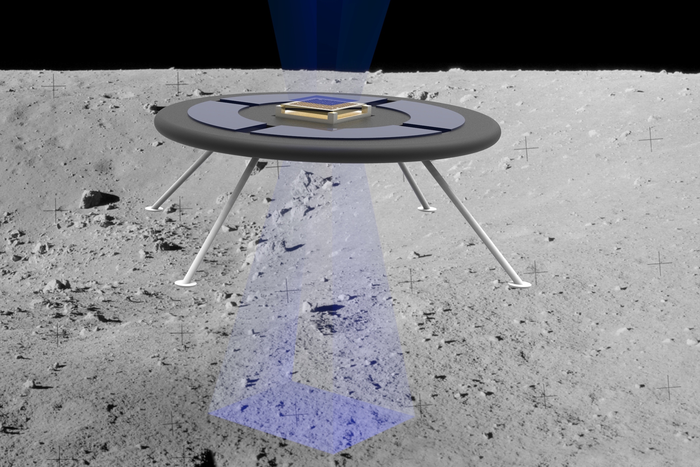MIT engineers develop ‘flying saucer’ that could hover across the moon
Mathematical models suggest design could provide enough thrust to get gliding rover off ground

Engineers have envisioned a new concept for a rover that resembles a disc-shaped flying saucer and can float across the lunar surface by harnessing the Moon’s natural charge.
Since the Earth’s companion lacks an atmosphere, it builds up an electric field through direct exposure to the sun and surrounding plasma, which researchers say can be utilised for rover levitation on the Moon.
The lunar surface charge is strong enough to levitate dust more than 1m above the ground, in a similar way to how static electricity can cause a person’s hair to stand on end, say the researchers at Massachusetts Institute of Technology (MIT) in the US.
Previous studies have proposed that gliders could be built with wings made of Mylar—a material that holds the same charge as surfaces on airless bodies—since like-charges repel each other.
However, scientists also theorised that such designs based on ion boosts would likely be limited to small asteroids as the lift-force generated from this repulsion would be counteracted by the gravitational pull of larger planetary bodies like the Moon.
In the new feasibility study, MIT aerospace engineers have shown that such an ion boost should be strong enough to levitate a small, 1kg vehicle on the moon and large asteroids like Psyche.
The concept vehicle, resembling a disc-shaped flying saucer and described in the journal Spacecraft and Rockets, uses tiny ion beams to both charge up the vehicle and boost the surface’s natural charge.
“With a levitating rover, you don’t have to worry about wheels or moving parts,” Paulo Lozano, a co-author of the study, said in a statement earlier this month.
“An asteroid’s terrain could be totally uneven, and as long as you had a controlled mechanism to keep your rover floating, then you could go over very rough, unexplored terrain, without having to dodge the asteroid physically,” Dr Lozano, director of MIT’s Space Propulsion Lab, added.
The rover design consists of small, micro-fabricated nozzles connected to a reservoir containing ionic liquid in the form of a molten salt.
When a voltage is applied to the molten salt, the liquid’s ions are charged and emitted as a beam through the nozzles with a certain force, helping the rover achieve lift, the researchers said.
The team’s mathematical models suggest the idea could work and would provide enough thrust to get the rover off the ground.
In lab experiments, the researchers estimated the conditions needed for a small, palm-sized vehicle weighing about 60g to levitate.
Using these results they have predicted that a small rover, weighing about 1kg, could achieve levitation of about 1cm off the ground, on a large asteroid such as Psyche, using a 10-kilovolt ion source, and about a 50-kilovolt source to get a similar liftoff on the moon.
“This kind of ionic design uses very little power to generate a lot of voltage. The power needed is so small, you could do this almost for free,” Dr Lozano said.
With larger voltage, researchers said the ion thrusters could generate more force to lift a vehicle higher off the ground. But they added that the models need to be revised to account for how the emitted ions would behave at higher altitudes.
“We think of using this like the Hayabusa missions that were launched by the Japanese space agency,” study lead author Oliver Jia-Richards, a graduate student at MIT, said in a statement.
“That spacecraft operated around a small asteroid and deployed small rovers to its surface. Similarly, we think a future mission could send out small hovering rovers to explore the surface of the moon and other asteroids,” Mr Jia-Richards said.
Join our commenting forum
Join thought-provoking conversations, follow other Independent readers and see their replies
Comments
Bookmark popover
Removed from bookmarks